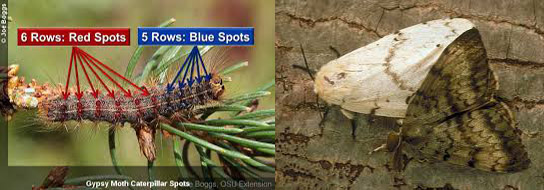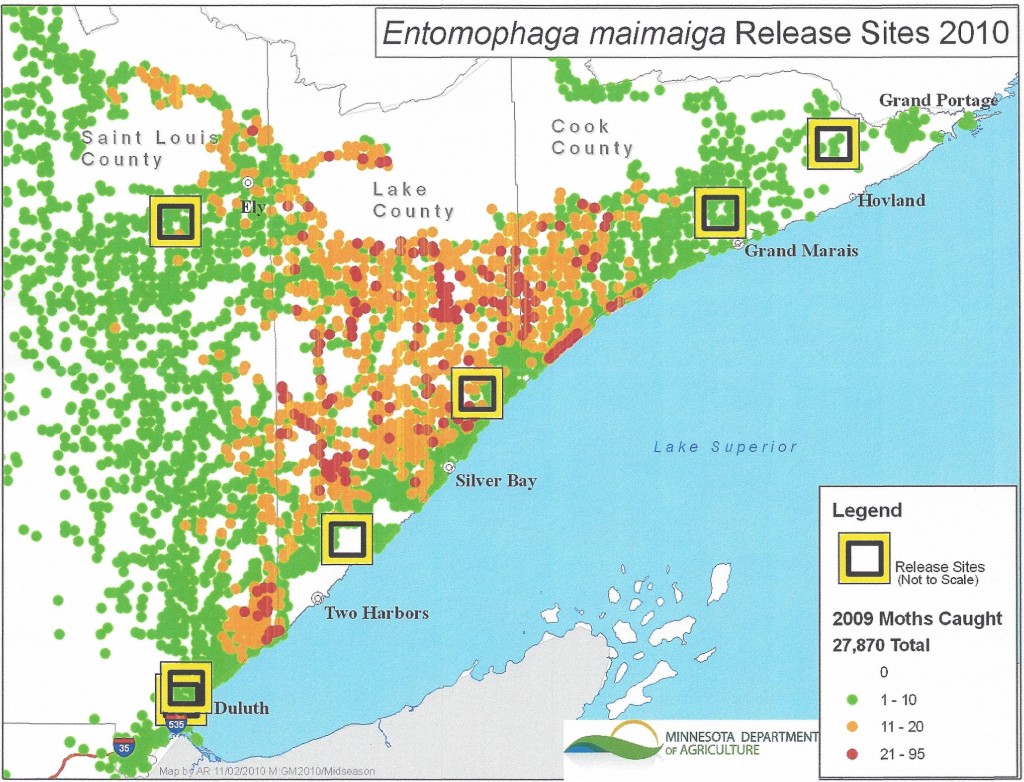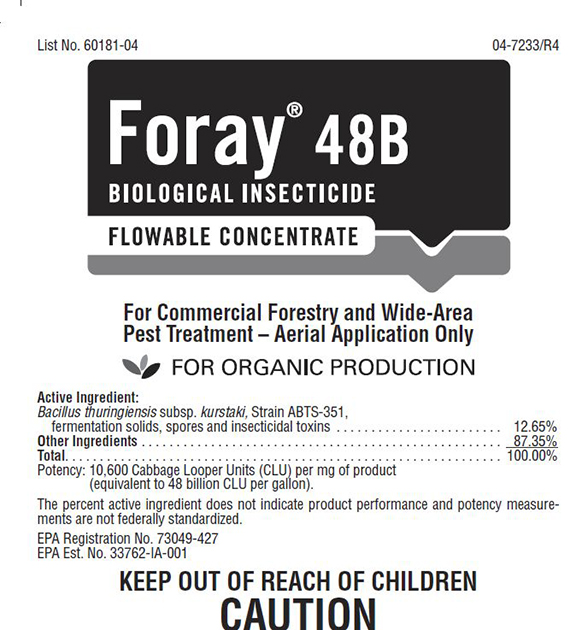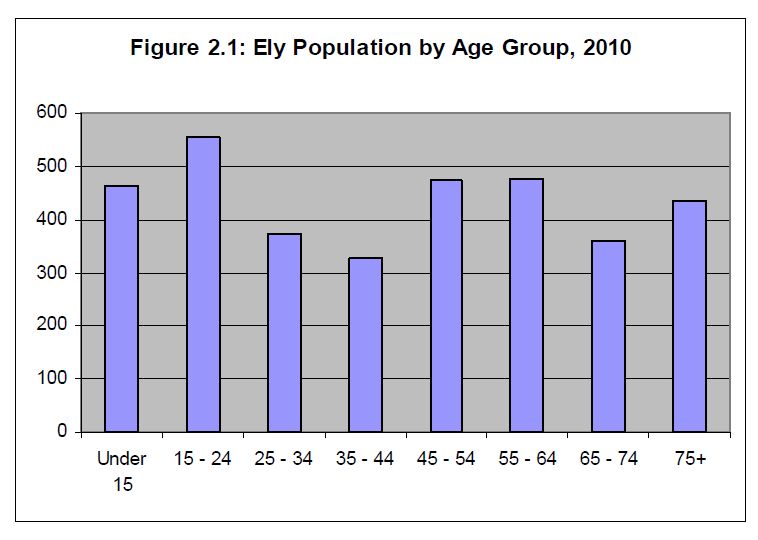The Minnesota Department of Agriculture, MDA, is proposing to spray for gypsy moths over most of downtown Ely and parts of wooded areas south of Ely. The proposed spray zone of 565 acres is shown below. The application rate for the agent Foray 48b, manufactured by Valent BioSciences, is 1/2 gallon per acre. That will mean that 5 plus 55-gallon barrels of this agent will be evenly distributed over Ely (twice, 10 days apart).
Sign our Petition – Say No to Aerial Spraying of Ely!
Sign our Petition – Say No to Aerial Spraying of Ely! Sign our Petition – Say No to Aerial Spraying of Ely!

Let’s start with the most important information first, what you really should know to make an informed decision about the aerial spraying of Ely:
To learn more about Foray 48b and Btk: http://nosprayzone.number6.org
In-depth report on health and environmental risks associated with Foray 48b and Btk:
http://www.lbamspray.com/Reports/BacillusthuringiensisSafetyReview031208.pdf
The upside of getting rid of a few Gypsy Moths found in 2015 is, it is a plus for the timber industry outside Ely.
The downside of blanketing the town with a pesticide designed to kill one very specific critter, but in actuallity kills hundreds of other species of moths and butterflies, is:
- Research indicates aerial spraying is NOT necessary with the small numbers of moths present; ground-based treatments will work.
- Other Lepidoptera will also be killed. Minnesota moth and butterfly experts estimate hundreds of species of important pollinators will be killed.
- The documented and significant health side effects have been systematically downplayed!
- The known side effects appear to primarily come from the 87.9 % “OTHER INGREDIENTS” and BTk production impurities–NONE of which we are permitted to know anything about.
- The timing couldn’t be worse, as the busiest time of year for Ely businesses approaches with a high presenceof tourists. Are these costs reimbursable to the city, to its residents?
- The actual cost to the city and its residents is unknown, and hasn’t been considered so far.
- Who should alert residents, businesses, doctors, hospital, at-risk individuals?
- What should those warnings say about safety, preventing exposure, what to do if exposed? How will this be coordinated with a variable spray date, how much warning?
- Who will pay for medical expenses related to medical services required by the residents of Ely if needed?
- What will the costs be to the city to clean public areas and equipment?
The result has been that ever-growing number of people are deciding the aerial spraying of Ely is unnecessary and will do more harm than good. They want a more targeted approach to solving the small gypsy moth presence in Ely.
The MDA-recommended reference book on gypsy moth research is “The Gypsy Moth: Research Toward Integrated Pest Management, USDA, Forest Service Technical Bulletin 1584 from 1981″
You can read this book for free online at Google Books with a Google Account (you will hve to login after clicking on the link to this research book). This makes this reference material searchable by topic so that you can find the pages that interest you the most. Direct links from this page only worked part of the time, so please copy this address into your browser to see the book
https://play.google.com/store/books/details?id=hc9DAQAAMAAJ&rdid=book-hc9DAQAAMAAJ&rdot=1
I also have a hard copy from the MDA that you may borrow if you prefer; contact rwatson@elyminnesota.com
Other links the Minnesota Department of Agriculture would like you to view are listed at the bottom of this page.
Images of male and female gypsy moths and their easily distinguished caterpillar:

MDA map of Arrowhead Region of norhteastern Minnesota showing the distribution of gypsy moths in 2010. When asked, the MDA representative stated it would look about the same today.

Concerns Raised in the Ely Community:
One of the first to raise concerns was April Roy. She has alergies, and is concerned for her son and herself. She eloquently explains the research she has done, with references, and concludes that aerial spraying is the least optimum solution at this time. See her article first published in the Ely Echo a week ago.
Wisconsin Cooperative Gypsy Moth Program – http://gypsymoth.wi.gov wrote: “Due to rare cases of mild, short-lasting allergic reactions to humans, you may wish to stay indoors with the windows closed or leave the area during a spray if you have severe food allergies or chemical sensitivities.”
Even a reference supplied by MDA, Bacillus Thuringiensis General Fact Sheet stated that “evidence suggests that toxicity to these non-targets may be related to impurities from the production of Bt.”
One of the main concerns is the 87.35% “Other Ingredients”; here is the product label:

The product ingredients are proprietary and will not be divulged. The manufacturer was kind enough to send this label and the product SDS, Safety Data Sheet, and had a Bt expert call to answer my questions. He was very pleasant to talk with and filled in some of the blanks in my research, but he also left much unanswered or unanswerable.
He admitted that most of the Other Ingredients were water but would not admit to any other ingredients or even if there were any other ingredients. He said that many companies out there would love to make a product like they do. He also said it is just fermentation. So, either there are proprietary “other ingredients” or there is a very special “other process” they will not even hint at. And, that in my opinion is the rub. If I don’t know what it is, regardless of the assurances of the EPA, MDA, DNR or the Ely City Council, I wouldn’t recommend ingesting, inhaling or touching it.
When asked a direct question about the significance of small numbers of moths and direct ground spraying vs. aerial spraying here is what he said: For small numbers, 18 or so, (and then he remembered I had mentioned the number 14 so he threw in, maybe 14) direct ground application with BTk and then follow-up with Disparlure might do the job.
Those most vulnerable in our community: The young, the old, those with compromised immune systems, those with a preexisting condition, and those with allergies and chemical sensitivities-which in Ely is a large percent of the population. The Ely Bloomenson Hospital has recorded 143 adults and 63 children under the age of 17 with asthma. And, they were quick to add those are just the documented cases. The hospital currently does not have the ability to extract the data for those with other compromising aliments. How about the most vulnerable age groups? Below is a chart for population by age in the latest draft of the Ely Comprehensive Plan document:

Health-Vulnerable Citizens in Ely (nearly half the population)
Under 15 years of age: 450
Over 65 years of age: 775
With asthma: 206, Ely Bloominson Hospital reported asthma cases in 143 adults and 63 children younger than 17
Take a guess of the numbers of other vulnerable citizens
Pregnant mothers
Anaphylactics
Respiratory problems
Allergics
Cancer patients
Sleep disorders
Chemical sensitives
Those with pre-existing medical conditions
A rough estimate, but a very conservative one, is there are over 1431 residents in Ely with health concerns that should not be overlooked when assessing the risk of introducing ANY further stress to their systems.
Information from other communities that have had health problems after their communities were aerially sprayed for gypsy moths with Foray 48B and research found that was not listed by the MDA as something Ely should review or consider (research by April Roy). This is a must read to get a balanced view of the very real effects communities and individuals have experienced after aerial spraying with Bt. Click Here
Another major concern is the killing of non-targeted species of moths and butterflies:
Pollinators are extremely valuable to all of us. We can no longer treat our pollinators as expendable or we will be pollinating our crops by hand with small paint brushes the way the Chinese have to in many parts of China.
One butterfly/moth expert retired from Minnesota state employment as a scientist said there would be hundreds of other moth and butterfly species that would be killed with the spraying of Btk. He also said some, like the cabbage moth would be found active very shortly after the spraying and that some species would never return. In addition it would take five to 10 years for the “re-assembly” of the remaining species in our area.
Robert Dana, PhD with the Minnesota Department of Natural Resources, St. Paul, MN prepared a list of the specific species of concern during other spraying events along the North Shore. CLICK HERE TO SEE HIS REPORT AND LIST OF BUTTERFLIES AND MOTHS EFFECTED:
And, this study was done prior to spraying in Grand Portage Monument.
Species potentially vulnerable to the use of Btk to slow the spread of the gypsy moth, Lymantria dispar
The primary objective of this investigation was to evaluate which species of macrolepidoptera present at GRPO would be adversely affected if Btk were used to control the gypsy moth. Species whose larval feeding stage coincided with the timing of aerial applications of Btk to control gypsy moth larvae were considered to be the most susceptible. As June is the primary month for Btk application, species of butterflies and moths whose larvae were actively feeding in June were judged to be the most susceptible. However, the residual effect of Btk in July could also place species whose larvae feed in July at risk. Susceptibility of butterflies and moths collected at GRPO to Btk was evaluated by a search of life history data in various references and literature. The primary sources of life history data for butterflies were Holmes et al. (1991) and Scott (1986). The recent field guide on the caterpillars of Eastern North America (Wagner 2005), Wagner et al. (2001), and data from the Canadian Forest Insect Survey (Prentice 1962) provided much of the life history data.
Seventeen species of butterflies observed or collected at GRPO in 2008 were judged to be potentially susceptible to the application of Btk (Table 3), including E. phaeton, a rare and local butterfly known to occur at only one other site in Cook County (MacLean 2006). All other “at risk” species, although important members of the butterfly fauna at GRPO, are widespread, common most years and apparently secure (Holmes et. al 1991). Additional butterflies and skippers recorded from Cook County that would be potentially harmed by Btk application include Carterocephalus palaemon (Pallas), Colias interior Scudder, Colias philodice Godart, Enodia anthedon A. H. Clark, Euphyes vestris (Boisduval), Nymphalis milberti (Godart), Vanessa virginiensis (Drury), and Wallengrenia egeremet (Scudder) (Holmes et al. 1991; MacLean 2006). These species were not collected or observed in 2008 but likely inhabit GRPO.
Summary of an Email from SumOfUs.org reports on a New U.N. study of the health of World Wide Pollinators: (If we aren’t careful, we’ll be pollinating our crops by hand with small paint brushes like the Chinese) See article: Decline of bees forces China’s apple farmers to pollinate by hand
The new study finds that bees, butterflies, and other pollinators are in even greater danger than we previously thought — and may even be at risk of extinction.
Conducted by a top team of 70 U.N. scientists, the report is the first-ever global study on the health of bees and other pollinators. And the results are much, much worse than many expected.
Without bees and other pollinators, the world will face a global food crisis.
Almost 90 percent of all flowering plants rely on pollinators — including 75 percent of the world’s food crops.
Of course, we’ve known for a long time that bee populations are in decline. But this study shows that the threat of global extinction has risen to a whole new level.
Sites with information the Minnesota Department of Agriculture would like for people to read:
www.mda.state.mn.us/gypsymoth
http://www.gmsts.org/
http://www.health.state.mn.us/divs/eh/pesticide/bt.html
http://www.na.fs.fed.us/pubs/detail.cfm?id=5251
They would like for us to look at the above 1995 Environmental Impact Statement “Gypsy Moth Management in the United States: A cooperative approach” and the Record of Decision by the USDA, FS. I’ve requested a copy of the current and specific EIS for Ely and may have a copy by the end of this week, Friday March 11, 2016 with a deadline for comments being Tuesday March 15, 2016 to review and comment on the EIS. So we will have one weekend and 2 days, something feels, as does the rest of this project, very fishy about the MDA tactics.
Other Sites with information you wil find informative (much of which was never mentioned by MDA and is contrary to their sales pitch):
The History, Biology, Damage, and Control of the Gypsy Moth, Porthetria
To learn more about Foray 48b and Btk: http://nosprayzone.number6.org
The U.S. EPA inerts list is available at http://www.epa.gov/opprd001/inerts/
In-depth report on health & environmental risks associated with Foray 48b and Btk: http://www.lbamspray.com/Reports/BacillusthuringiensisSafetyReview031208.pdf
Alternatives to Aerial Spraying for Gypsy Moths:
Squelching gypsy moths: what’s hot and what’s not in the arsenal against leaf eaters.
Gypsy Moth Fungus



















